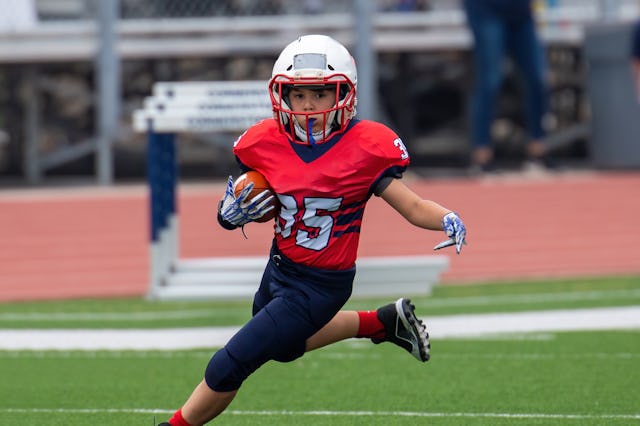Half Of Americans Think It’s Not ‘Appropriate’ For Kids To Play Tackle Football
More knowledge about injuries, particularly head trauma, has likely led to this shifting view.

As American as apple pie? Baseball is popular in the U.S., but one of our national pastimes is definitely football — or American football, as it’s known in the rest of the world. But even in its homeland, where 100 million people watch the Super Bowl each year, popular opinion is quickly shifting.
In recent data released from the National Sports and Society Survey, 50% of respondents disagreed with the statement, “Tackle football is appropriate for kids to play.” Of the 4,000 U.S. adults surveyed, only 45% agreed with the statement, while the remaining 5% said they were uncertain.
The survey did not ask participants to explain the reasons behind their answer, but it’s almost certain that those opposed to kids playing football would cite increasing concern about head injury. Cases of famous players suffering CTE, or Chronic Traumatic Encephalopathy, have gone public in recent years, rising parents’ concerns about their children participating in the sport.
CTE, according to the CDC, is “caused in part by repeated traumatic brain injuries, including concussions, and repeated hits to the head, called subconcussive head impacts.” Unfortunately, researchers do not yet know exactly how many times a person must be hit in order to sustain damage, or if some people are more susceptible than others to develop the condition. A CTE diagnosis can only be confirmed after a person’s death.
We do know that certain sports carry a much greater risk of concussion than others, and that tackle football is the number one offender. A CDC study published in Sports Health found that kids ages 6-14 sustained fifteen times more head impacts when playing tackle football than they did playing flag football, and 23 times the number of “high-magnitude” head impacts. The differences were stark, with tackle football players accumulating a median of 378 head impacts each per season, whereas flag football players only had a median of eight.
Those numbers may look decisive, but some advocates for the sport argue that the overall incidence of concussion is still low, and that policies such as banning tackling in younger players could actually result in more concussions when athletes enter high school and begin to tackle. It’s also hard to quantify the number of concussions that young athletes sustain because many are not seen in emergency rooms and therefore their cases don’t appear in the data.
But Americans’ feelings about the sport aren’t entirely rational. The cultural — and economic — pull of football is strong, and we don’t all feel it in same way. The National Sports and Society respondents who believed it was inappropriate for kids to play football were more likely to identify as female, white, gay, and higher income, whereas those who approved of kids playing were more likely to identify as male, heterosexual, Black, lower income, and politically conservative.
In the end, perhaps there’s nothing more American than living in a house divided.
This article was originally published on